Explosion in Halifax Harbour, 1917 (2015)
CLIENT: CANADA POST CORPORATION
It was Canada’s 9-11: 2,000 civilians killed outright, many thousands injured, 10,000 left homeless and 1,600 homes and businesses destroyed. One contemporary observer said it was “worse than war.” A fact often stated about the catastrophe is that it was the “largest man-made explosion before the Atom Bomb,” a claim that may or may not be true. Certainly in terms of loss of life and property damage, however, the explosion of a munitions ship in Halifax harbour on 6 December 1917 eclipses any other urban disaster in Canadian history.
Military Units of Halifax Fortress in Two World Wars (2014)
CLIENT: PARKS CANADA AGENCY
Halifax was heavily defended in both world wars but the army performed very different duties. Powerful searchlights, anti-submarine nets, and inspection of neutral shipping were common to both wars, but troops in WWII spent a lot more time camouflaging emplacements and learning anti-aircraft tactics. Many more units moved in and out of Halifax in WWII for training in Bedford, and there was a high volume of overseas drafts. Halifax experienced explosion accidents and major riots in both wars; the army played a significant role in responding to these traumatic events.
The Garrison Response to the Halifax Explosion (2014)
CLIENT: PARKS CANADA AGENCY
When disaster strikes anywhere in the world, first responders become front line soldiers. In Halifax, no Emergency Measures Organization existed to deal with the calamity of December 1917. It fell to 5,000 soldiers of the Halifax Garrison and Canadian Expeditionary Force, working with civic authorities, to undertake rescue and recovery work. The military also built emergency housing for thousands of homeless civilians. This report investigated the role played by garrison troops in the response to the Halifax Explosion.
Norwegian Contributions to Canadian Arctic Exploration (2013)
CLIENT: CANADA POST CORPORATION
Norwegians played a key role in exploring Canada’s far north at a time when significant areas remained unexplored and uncharted. In 1906, Roald Amundsen successfully navigated the Northwest Passage; another Norwegian, Henry Larsen, repeated the feat 40 years later. Today, two Canadian Coast Guard icebreakers are named after these intrepid explorers.
An East Coast Port: Halifax in Wartime, 1939-1945 (2009)
CLIENT: NOVA SCOTIA ARCHIVES
The Ajax Club was founded in Halifax in 1940 as a social club for Royal Navy seamen. Its motto was “beer in decent surroundings.” In 1942 temperance advocates succeeded in having the club closed, heightening civilian-military tensions in Halifax for the duration of the war.



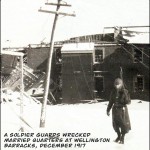
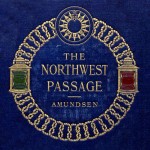
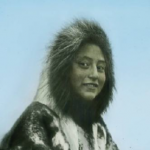

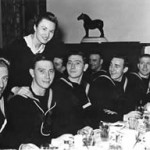
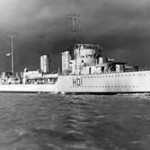
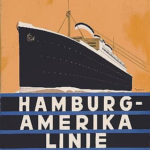


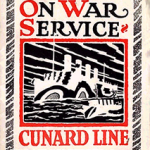

Hi there,
I really enjoy your website. Just wondering if you have any information on the Halifax Coffee & Spice Mills?
Thanks,
Kevin
Dear Kevin,
Thanks for your message. I’m not familiar with this company; is it possible you are referring to J.P. Mott’s spice mill in Dartmouth? This was in operation ca. 1870-1920. See Harry Chapman’s history of Dartmouth (In The Wake of the Alderney) for more info. Nova Scotia Archives, Dartmouth Heritage Museum and Dalhousie University Archives (for business records) are other possible sources of info.
Best wishes,
Jay
Hello, Jay:
I recently read your article, “Halifax, Nova Scotia In World War II: An Allied Staging Area”, and I found the history quite fascinating. I was born and raised in Halifax, so I’m intrigued by the interesting stories of years gone by. I’ve recently purchased a home in my old neighbourhood, the West End, and I’m trying to determine if the house was constructed by Wartime Housing Limited in the 1940’s. The home is on Cork Street, between Connolly and Oxford Streets. The house certainly appears to be a “pre-fab” when I look at the style and the construction of the house (sections connected by carriage bolts), but I can not seem to find any historical evidence of where exactly the pre-fabricated homes were constructed in the city. Do you know if any such information exists?
Greg O’Brien
Hi Greg,
Thanks for your message. Aside from my own dissertation, I’m not aware of any scholarship focusing specifically on WHL projects in Halifax. Jill Wade’s 1984 Master’s thesis explains the background very well, but contains little reference to Halifax; she focuses on projects in Vancouver. There are WHL houses all around the West End; more than 1,000 were built & it would be interesting to know how many survive — I suspect most because the area has not undergone major redevelopment since the 1950s.
The stretch of Bayers Rd from Connaught to the Bi-Hi on-ramp is the most visible group of WHL houses. Cork St was only one street away from Ardmore Park, a 200-house subdivision built by the city in 1942 with money borrowed from the feds. I expect that some if not all of those houses were WHL designs, which are fairly easy to spot despite many exterior modifications over the years.
I would think the carriage bolts are a dead giveaway to pre-fab construction, but a property title search would probably settle the matter. Most WHL houses were rented initially and renters were given the option to purchase later on (early 1950s IIRC). Some WHL houses were also built for veterans; not sure how many of those exist in Halifax or precisely where they were located, but all construction was completed by 1947. I’ve seen a reference that the city financed more than 600 loans so that homeowners could have basements dug under their WHL houses. The municipal archives over in Burnside Industrial Park would be the logical place to go to look for more information on the wartime WHL projects: https://halifax.ca/archives
Hope this helps,
Jay White